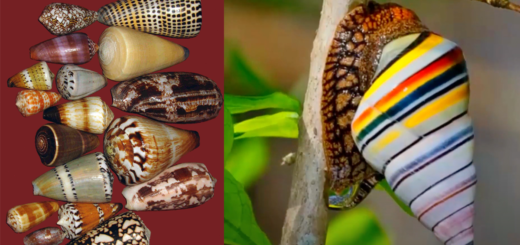Roly-Polies and Pillbugs – Cute Isopods That Aren’t Bugs at All
Pillbugs, sometimes given the common name, Roly-polies, are known for rolling into a tight ball when disturbed. Like miniature armadillos, these little bugs are found all across the world, a cosmopolitan species. Their scientific name reflects the roly appearance: Armadillidium vulgare.
However, the pill bugs seen in North America were introduced from Europe.
Today, pillbugs are having a sort of renaissance, as breeders are offering multiple colors, and many species beyond Armadillidium, as pets. Their small size, cute appearance, and ease of care make them desirable, although perhaps an unlikely pet.
Later, we’ll show you our favorites from several species, and where you can get them!
Fancy, colorful varieties can range from rather inexpensive, to costly and coveted among isopod aficionados. As pets, they can live up to five years.
Pillbugs Aren’t Bugs but Related to Lobsters
Often, pillbugs are found with a very similar creature, the sowbug, Porcellio scaber, also called a woodlouse. Sometimes, pillbugs are referred to as sowbugs, woodlouse, or woodlice. It’s a bit confusing, and the common names vary by geography. In Europe, they may all be called woodlice.
Although similar, the sowbug can’t roll into a ball, which is called conglobating. Also, sowbugs are generally more agile. To tell the difference: a sowbug is flatter in shape and has two pointy appendages like tails. These tails stick out and prevent them from rolling into a ball.
Both critters are isopods, not technically insects at all, but arthropods known as a terrestrial crustacean. Therefore, these little guys are relatives of sea-dwelling crabs, shrimp, and lobsters, not insects! They are land-based crustacean, having left aquatic life behind millions of years ago.
Notable (and Scary) Relatives
Deep in the ocean worldwide, related giant isopods can reach over a foot long. Although large, they are harmless scavengers waiting for food to fall to the ocean floor.
See a video of a giant isopod below from the NOAA Office of Ocean Exploration and Research, Gulf of Mexico 2017:
Another relative, the sea-dwelling tongue-eating louse, is rather horrifying. It lives as a parasite on fish, clinging to the tongue of living fish. Over time, the tongue is eaten away, and the louse remains in place. From there, the isopod functions much like a tongue stand-in for the fish.
See the fish tongue louse from Animal Wire below:
A Creature with Lots of Names
Although you may have your favorite name for them, these critters go by many names. For example, the common names in the UK include:
- Armadillo bug
- Wood shrimp
- Cheeselog
- Doodlebug
- Roly-poly
- Potato bug
- Roll-up bug
- Chuggypig
Which name is your favorite? Certainly, Chuggypig is ours!
Roly-Poly Pilgrims
At one time, there were no roly-polies in North America, which is strange to consider seeing how plentiful they are now. Today, there are so many that their collective feeding habits may serve to mitigate the effects of climate change to some extent. Notably, they feed on a fungus that otherwise releases carbon dioxide into the atmosphere.
These terrestrial isopods colonized the New World along with humans from Europe and northern Africa.
Similar to some fascinating sea creatures, pillbugs may have traveled the globe in the ballasts of ships. Sometimes, earth and boulders were used to balance wooden ships. Then, when the ships arrived at their destination, the dirt was discarded. Also, they likely found their way along with imported plants, hidden out of sight.
Thus, the pillbugs and their similar sowbug friends made themselves at home like wee crustacean pilgrims. However, these little guys seem to have had an overall harmless or even beneficial effect, unlike many invasive species. Wherever they go, they feed on rotting plant material, aerating and fertilizing the soil. Fortunately, they don’t tend to be harmfully destructive to live plants in the wild, though some isopods in planted vivariums are likely to eat your plants.
Recommended reading: Armadillo Facts – 46 Interesting Facts About Armadillo
Breathing Through Tiny Arm-Like Appendages
How is it that Roly-polies are related to isopods that live in the ocean? Interestingly, they breathe air with tiny arm-like appendages under the abdomen called pleopods. These multi-purpose appendages act as gills and serve to catch food, for swimming, and brooding eggs.
A pillbug, though relatively adaptable, must keep the pleopods moist. Moisture tends to be more critical for related sowbugs, but they can’t live underwater for long. However, if they do begin to dry up, they can push their tail-like appendages into water droplets to replenish the gills.
Similarly, a lobster can survive out of the water as long as the gills on their legs remain moist. In fact, lobsters may survive transport better if chilled and wrapped in soaked towels, not kept in standing water. Otherwise, they may use up the oxygen in small containers.
See more about the pleopodal lungs from the Natural History Museum below:
A Pouch Like a Kangaroo?
As noted, pillbugs are sometimes compared to armadillos. However, they have a characteristic in common with opossums or kangaroos: Females have a brood pouch to hold babies. This pouch is called the marsupium, the same as with kangaroos!
Inside the Roly-poly’s fluid-filled marsupium, the babies hatch and go through their first molts in safety. In general, as many as 200 young can hatch and live underneath the mom for up to two weeks (depending on the species). Then, when they reach 2mm in length, they start to venture off.
By spotting the marsupium, you can differentiate a pregnant female from a male. Otherwise, males have copulatory organs on the anterior portion of the thorax.
See more about this from Animal Fact Files below:
Iridescent, Infected Blue Roly-Polies
Blue is a beautiful color, sometimes seen in lobsters and crayfish. However, when seen in pillbugs, it could be a sign of a virus. Scientists from California have noted the Isopod Iridescent Virus, or IVV, that spreads among the isopods, turning them a bright blue.
Don’t worry; it’s completely safe for humans! In southern California, researchers have studied where the blue ones are showing up. Generally, sowbugs and pillbugs are shades of grey, white, dark brown, orange, and variegated. Also, the eyes can be colorless, red, or black.
Cute Cultivated Varieties
Next, we’re sharing some amazing photos with permission from Smug Bug, a reputable source that offers cultivated isopods for pets. Some species benefit plants in planted vivariums, aerating the soil, and consuming dead leaves and organic matter. Plus, their waste fertilizes the plants.
However, those in the Armadillidium genus can consume fresh leaves and shoots. Thus, there is much to be learned about which species to choose, depending on your setup. For one example, some species prefer more humidity while others tolerate drier conditions.
Also, the isopods differ greatly in size, with dwarf varieties and some that reach two and a half inches long. Below are a few notable varieties shared with permission.
Thanks to Smug-Bug.com for allowing us to share these pictures!
Below: Porcellio haasi “high yellow” comes from Spain

Below: Armadillidium klugii “Montenegro,” also called the “clown isopod.”

Below: Cubaris species “rubber ducky” from limestone caves in Thailand.

Below: Armadillidium vulgare “magic potion” – a Japanese line.

As you can see, isopods come in an amazing array of colors and sizes. Do you fancy a Roly-poly pet yourself? As one of the most beloved of “bugs” that aren’t, they are also surprisingly fascinating.
Featured image: Armadillidium klugii “Montenegro” with permission from Smug-Bug.com







